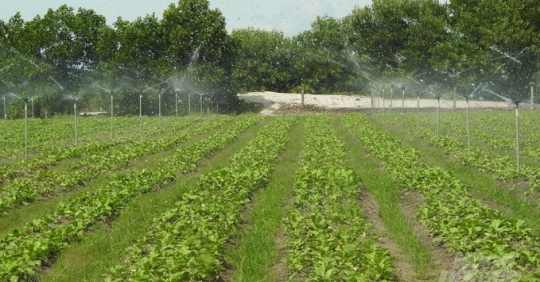White sand “lays” hundreds and billions of money
Yen Hoa is the new municipality name after Cam Xuyen District (Ha Tinh Province) merged the two administrative units Cam Hoa and Cam Yen according to Resolution No. 819/NQ-UBTVQH14 of the Standing Committee of the National Assembly.
After the administrative boundaries were merged, this municipality expanded its area to more than 23 km2, of which the almost 4 km stretch of sand on the coast became a “money pit” for people to exploit.
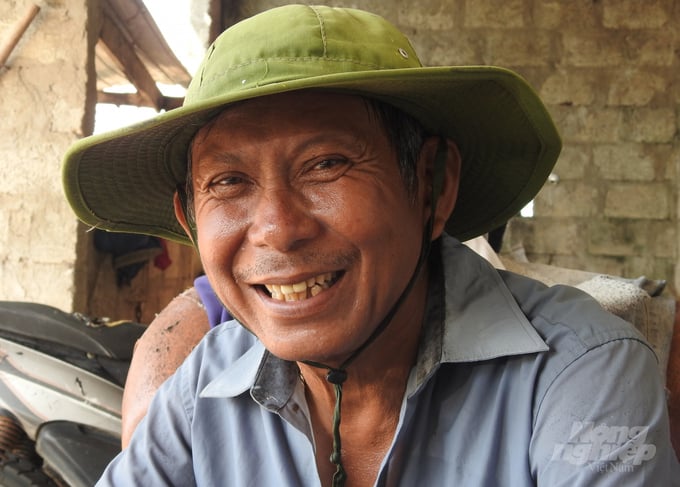
Mr. Tran Viet Chu, Director of Hoang Chu Service and Manufacturing Cooperative – a Green Incubator for the Sandy Coast of Cam Xuyen District, Ha Tinh. Picture: Than Nga.
Commune People’s Committee Chairman Tran Dinh Cuc shared: In the past, the Yen Hoa people were quite heavily engaged in the sea industry, but after the authorities at all levels supported many economic development policies on sand land and the characteristics of the sea profession diseases and dangers were uncertain such that the entire community at this time has only 250 households in the three hamlets of Bac Hoa, Phu Hoa and My Hoa clinging to the sea.
In recent years, in Ha Tinh in general and in Cam Xuyen district in particular, the situation of peasants with a separation of lowlands and highlands is quite common. They left because the land “buried together to cut the navel” could not help them get better. In Yen Hoa, it is very proud when the elderly, young people, people of working age or beyond working age, most of them have a job, have a stable income and even get rich on their own land. .
“On the economic development map of Cam Xuyen District, Yen Hoa is one of the most prosperous communes in terms of people and occupations, especially in terms of the development of cultivation and agriculture on sandy soils. That means raising chickens under the forest canopy, raising high-tech shrimp, growing vegetables, tubers and fruits on a large scale…” said Mr. Cuc proudly.
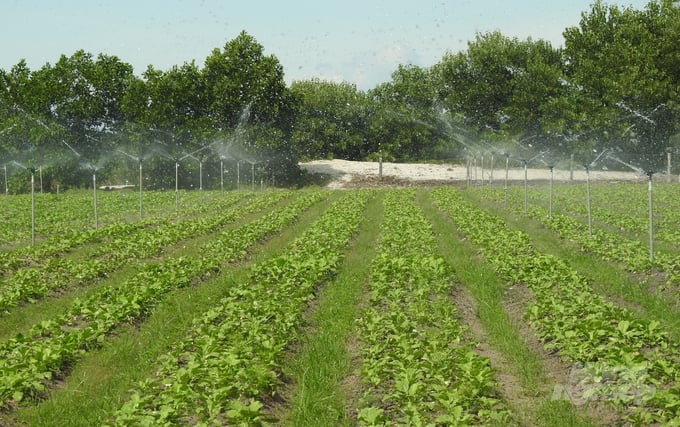
3 hectares of radish per year brings the Hoang Chu Cooperative a profit of hundreds of millions of dongs. Picture: Than Nga.
At present, Yen Hoa has developed 120 models of chicken raising in the sand with a size of 500 or more chickens, the number of households raising chickens under 500 chickens cannot be counted. In addition, the entire community has developed 35 ha of high-tech shrimp farming; Two general agricultural cooperatives, Ha Trung and Hoang Chu, are very effective in growing vegetables and fruits on 15 hectares of sandy soil, helping to raise the local per capita income to more than VND 38 million/person/year.
In the sweltering heat of mid-September, Mr. Tran Viet Chu and his wife, Ms. Nguyen Thi Khuong, were still hard at work on the beds, sowing tiny radish seeds on the nearly 3-hectare sandy beach. Although he is chairman and director of Hoang Chu Production and Service Cooperative (Hoang Chu Cooperative), Ha Tinh’s “specialty” sun and wind have made this 62-year-old man dark and old like a farmer Doing a Good Job or.
Mr Chu said that in the years prior to 2014, the sandy beach of Phu Hoa village had only casuarinas and melaleuca trees, bringing no economic value. After the establishment of the Hoang Chu Cooperative, the entire sandy area was covered with the green color of radishes, melons and watermelons.
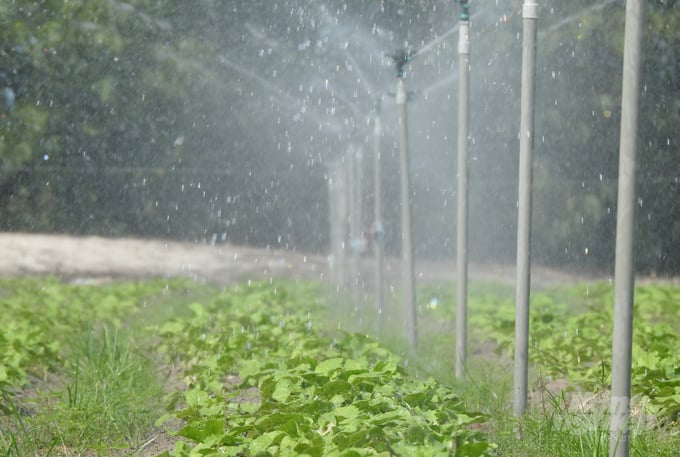
Scientific and technical advances are invested in the production of vegetables, tubers and fruits on the sand. Picture: Than Nga.
At that time the system of drip irrigation pipes; ploughing, milling and furrowing machines; Operator; Channels to connect consumption… are well invested by the cooperative. At the first turnip production, the whole district and province was amazed when the crops grew well and yielded more than on sandy soil or soil.
“In the first years of production, the average turnover was 1 to 2 billion VND/year. However, in recent years, due to the unstable consumption market, the production efficiency has decreased significantly. However, it must be confirmed that without this model of growing vegetables on the sand, my wife and I and the 7 members of the cooperative could not afford the expenses of raising the children to study or building a house or buying a car,” said Mr. .
Although the Ha Trung General Livestock Cooperative was “born later” than the Hoang Chu Cooperative, members not only invested billions of dongs to purchase equipment, machinery and factories, but also boldly planted pilot plants to replace economically inefficient crops. The coconut sector is currently developing quite well.
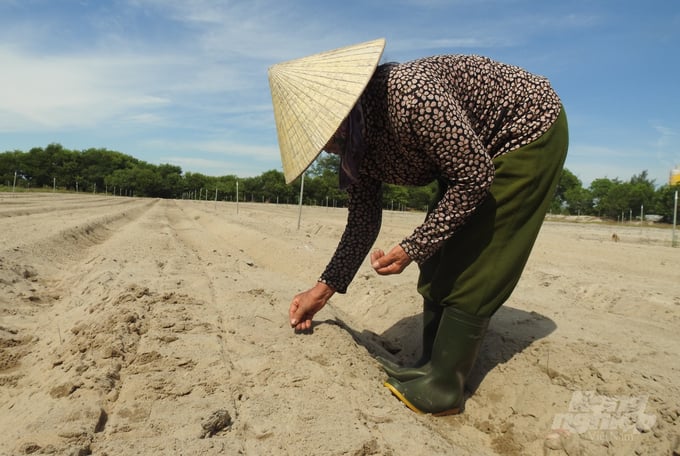
It takes a lot of patience with Mr. and Mrs. Chu and Ms. Khuong to turn the “laying” of the sand soil into money. Picture: Than Nga.
Besides the advantage of producing vegetables on the sands and raising poultry under the forest canopy, Yen Hoa is also a place that effectively develops the movement of shrimp farming on the sands with a total area of more than 40 hectares.
The resources of shrimp farming brings hundreds of billions of dongs to the people every year, but due to the harsh weather, Yen Hoa limits the expansion of its territory and focuses on investing in technology and disease prevention to prevent disease and increase the economic value per unit area.
The “capital” raises chickens under the canopy of the forest
Longer than the profession of growing vegetables, tubers and fruit in the sand is the movement of raising chickens under the canopy of the forest. With the advantage of a large garden area, mainly sand, the chicken farming activities in Yen Hoa in recent years not only brought producers very high economic efficiency, but also limit the environmental impact.

Although he is no longer of working age, he and his wife earn no less than VND 200 million annually raising chickens under the treetops. Picture: Than Nga.
All the chicken manure in the production process is collected and sold to cooperatives, households that produce vegetables on the sand, households that have the remaining manure after lime disinfection will fill it with sand to prevent disease before breeding new litters.
Although they are past working age, the annual economic value of Mr. and Mrs. Phan Danh Chi and Ms. Nguyen Thi Khuong in Phu Hoa Village is far ahead of many young couples, even households going abroad to work, developed than Japan , Korea .
The two grandparents left more than 5,000 m2 of sandy shoreline land from their father, the entire garden is shaded by the casuarina forest to block the sand. Almost 20 years ago Mr. Just followed the boat to the sea. Shaking income, a few months and months, sometimes even “hanging pots”, the life of a family of 5 is very difficult.
Around 2007 he saw the potential of raising chickens on sandy soil under the forest canopy without impacting the environment and bought just 200 chickens for a trial rearing. From then on, after 3 months of selling and selling with a double profit, he gave up the fish business, expanded the chicken farm to 2 cages, 5 cages and 7 cages, with the highest total flock of more than 4,000 chickens.
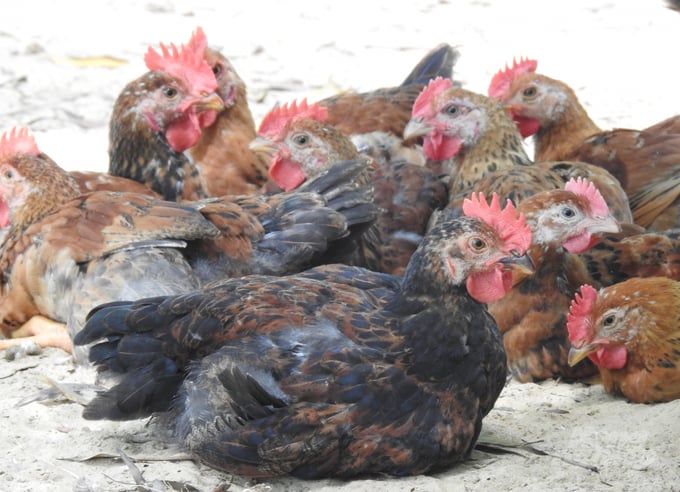
Yen Hoa chicken brand is famous throughout Ha Tinh province. Picture: Than Nga.
“On average, I raise about 3,000 infants in rollmat form per litter. So there are chickens for sale every month. Each batch produces 800 to 1,000 chickens and earns about 30 to 50 million VND,” Mr. Phan Danh Chi said smiling while pointing to the newly built house with a total of 1.5 billion VND, saying, “Thanks to raising chickens, we can have a beautiful one have a house to live in”.
Indeed, it is extremely eye-catching to stand in the midst of thousands of chickens wandering the sand in search of food. It is worth mentioning that the environment in the breeding area is very clean and does not smell. Yen Hoa chicken, in particular, is firm and delicious, so retailers love it.
Besides Mr. Chi walking along the coastal sands in the villages of Yen Hoa, Bac Hoa and Phu Hoa, it’s easy to spot dozens of names who make a profit of VND100-300 million each year by raising chickens under the canopy of trees achieve Mr. Nguyen Huu Duong, Mr. Ho Xuan Hung, Ms. Truong Thi Cong, Nguyen Thi Chien, Ms. Nguyen Thi Hoi, Mr. Truong Huu Cong…
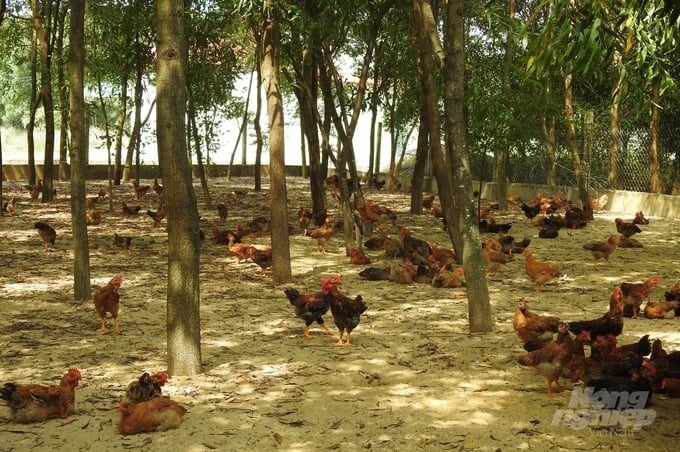
Raising chickens in the sand limits the impact on the environment. Picture: Than Nga.
Currently, Phu Hoa village has established a chicken farming cooperative group with 26 members participating in production according to the VietGAHP process. In order to increase income, in the future, Yen Hoa Township will encourage households with large garden land to keep investing in raising chickens, while applying technical solutions in production to prevent diseases, improve product quality and protect the environment.

